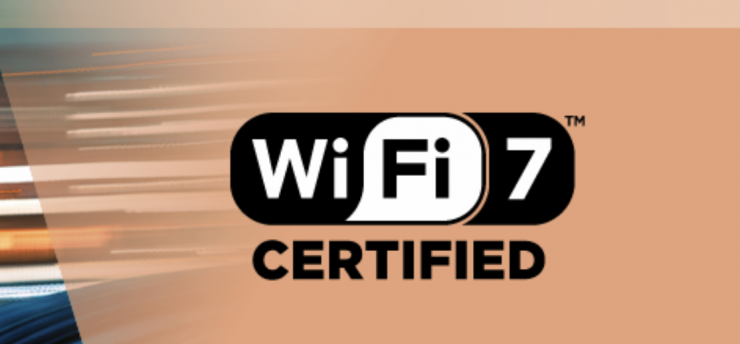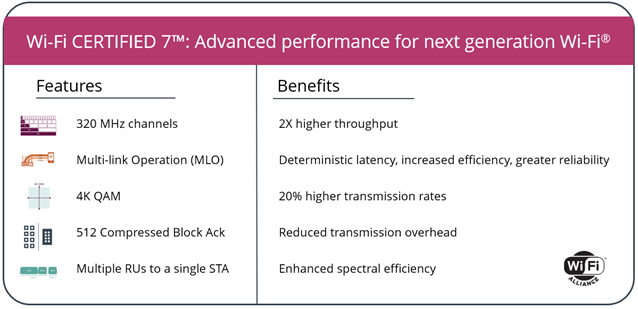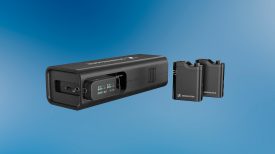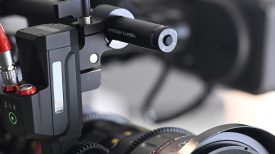Wi-Fi 7 was designed to meet the growing user demands for immersive, interactive technology. It is based on IEEE 802.11be technology, and it enhances Wi-Fi performance in the 2.4 GHz, 5 GHz, and 6 GHz bands. Wi-Fi 7 was built specifically with the 6GHz band in mind.
The Wi-Fi Alliance has started to officially certify devices that support Wi-Fi 7. This year, we will start to see new products like laptops, routers, and smartphones utilize the new standard. For the end user, this will mean big speed and efficiency gains compared to Wi-Fi 6E.

Wi-Fi CERTIFIED 7 delivers an unprecedented level of connectivity through an impressive list of new features to support a wide variety of cutting-edge use cases. Among these key features is 320 MHz channel widths, which increases capacity by enabling a higher number of simultaneous transmissions at the fastest possible speeds, and MLO, which increases throughput and lowers latency by enabling devices to combine different channels across frequency bands together. In countries with 6 GHz access, native 6 GHz support allows Wi-Fi 7 to take full advantage of the 1200 MHz of unlicensed spectrum being made globally available.
Both home and industrial settings will be able to use Wi-Fi 7 to maximize user experiences and productivity by leveraging Wi-Fi 7’s high throughput, high bandwidth, and low latency features. Video use cases, in particular, require high performance connectivity, which Wi-Fi 7 provides in abundance to allow for ultra-high definition streaming, video conferencing, and AR/VR/XR connections.
Wi-Fi CERTIFIED 7 networks support advanced Wi-Fi performance for high bandwidth applications to ensure each connected device delivers dependable experience, even in dense environments like stadiums and large campuses.
Wi-Fi 7 routers do already exist, and companies like Netgear, TP-Link, and Eero have been available for quite a few months now.
Key benefits of Wi-Fi CERTIFIED 7 include:
- Higher throughput
- Improved support for deterministic latency
- Enhanced efficiency, even in dense networks
- Increased robustness and reliability
- Reduced power consumption
The advanced features of Wi-Fi 7
The key features of Wi-Fi CERTIFIED 7 work together to deliver higher data throughputs and support deterministic latency for sophisticated use cases that demand first-rate reliability. New features include:
- 320 MHz superwide channels that are only available in 6 GHz provide twice the throughput of Wi-Fi CERTIFIED 6, enabling multigigabit Wi-Fi device speeds
- Multi-Link Operation (MLO) supports more efficient load balancing of traffic among links, resulting in increased throughput and enhanced reliability
- 4K QAM achieves 20% higher transmission rates than Wi-Fi 6’s 1024 QAM for greater efficiency
- 512 Compressed Block Ack improves efficiency and reduces overhead
- Multiple RUs to a single STA improves flexibility for spectrum resource scheduling to enhance spectrum efficiency

Wi-Fi CERTIFIED 7 supports connectivity for emerging use cases with high levels of interactivity and immersion. As user demand for high capacity, low latency technologies like AR/VR/XR, cloud computing, and Industrial IoT grows across market segments, Wi-Fi CERTIFIED 7 devices will deliver optimized performance in the 2.4 and 5 GHz band, and countries with access to 6 GHz will experience the full scope of Wi-Fi 7’s performance.





